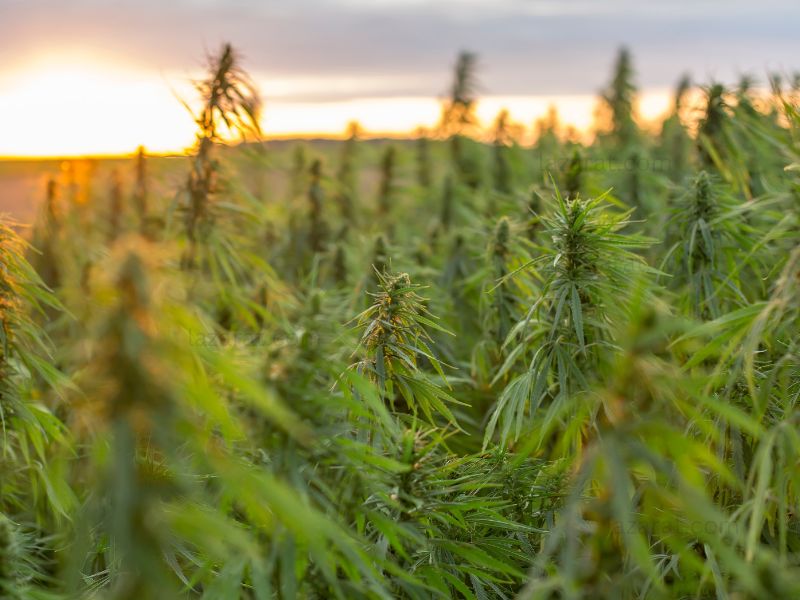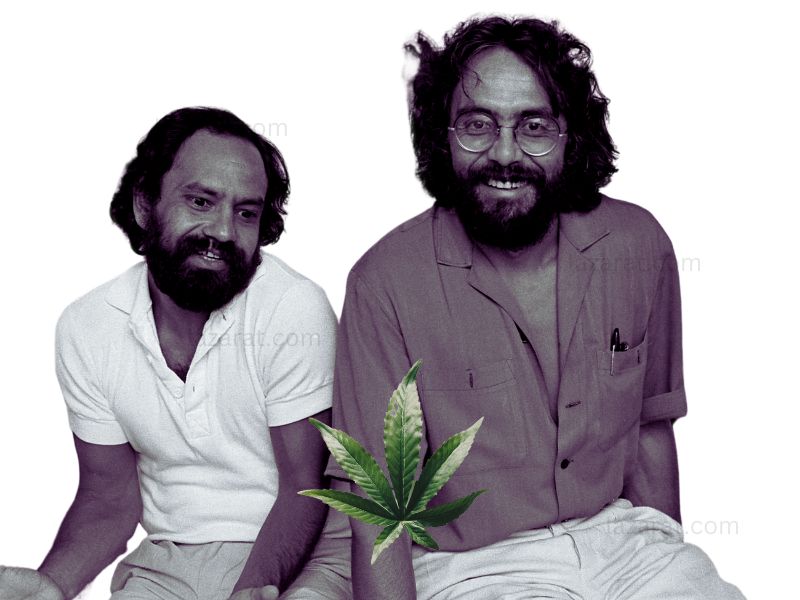Marijuana, often known as cannabis, has a rich and complex history that spans many cultures and time periods. This versatile plant has been revered, feared, and even celebrated throughout its long journey across the globe. In this article, we will explore the intriguing story of marijuana, from its earliest recorded uses in ancient civilizations to the rise of the popular stoner comedy duo Cheech and Chong and the significance of the term “420” in cannabis culture. As we embark on this fascinating journey, let us appreciate the diverse roles marijuana has played in human history and its continuing impact on society today.
Ancient Uses of Marijuana
Marijuana’s history can be traced back thousands of years, with evidence of its use in various ancient civilizations for medicinal, spiritual, and recreational purposes.
China’s Early History of Marijuana
One of the earliest documented uses of marijuana dates back to ancient China, around 2700 BCE. Emperor Shen Nung, a legendary Chinese ruler, is said to have discovered the medicinal properties of the cannabis plant. He recommended it as a treatment for various ailments, including rheumatism, gout, and malaria.
Ancient Egypt and Marijuana
Marijuana also played a role in ancient Egyptian culture. Historians have discovered cannabis pollen on the mummy of Rameses II, suggesting its use in embalming and religious rituals. Egyptian medical texts, such as the Ebers Papyrus, mention marijuana as a remedy for inflammation and other medical conditions.
Cannabis in India and the Middle East
In India, marijuana has long been associated with spiritual and religious practices. Hindu texts like the Atharva Veda, written around 1500 BCE, mention cannabis as a sacred plant. The psychoactive properties of marijuana were embraced in some religious ceremonies, where it was consumed as a drink called bhang to induce a state of spiritual enlightenment.
Cannabis also played a role in Middle Eastern societies. Ancient Persians and Arabs used it for medicinal purposes, and it was even mentioned in the famous Persian text, the “Shahnameh,” as a remedy for various ailments.
The Scythians and the Greek Connection
The Scythians, a nomadic people from Central Asia, were known for their cannabis use. Herodotus, a Greek historian, wrote about their ritualistic use of marijuana in his accounts from the 5th century BCE. The Scythians would throw cannabis seeds onto hot stones, inhaling the resulting fumes to induce a state of intoxication. Through trade and cultural exchange, the Scythians likely introduced the Greeks to the cannabis plant, and it subsequently spread throughout the Mediterranean region.
These examples are just a glimpse into the diverse ways marijuana was used and revered in ancient societies. Its journey would continue to evolve, spreading across the globe and playing a significant role in modern culture.

The Spread of Marijuana in the Modern Era
As time progressed, the use of marijuana spread beyond its ancient roots and began to make its way into the modern world. The following sections explore how the plant reached various regions and became integrated into different cultures.
Marijuana’s Journey to Europe
In the 16th century, European explorers traveling to the Americas and Asia encountered marijuana and brought it back to their homeland. The plant’s fibers, known as hemp, were particularly valuable for their strength and versatility. Hemp was used to creating ropes, textiles, and even paper, making it an essential commodity.
In the 19th century, marijuana gained popularity in Europe as a recreational drug. Intellectuals and artists, particularly those in France, became fascinated with the plant’s psychoactive properties. The infamous Club des Hashischins, a group of writers and artists that included Charles Baudelaire and Alexandre Dumas, would meet to consume cannabis and explore its mind-altering effects.
The Introduction of Marijuana to the Americas
Marijuana arrived in the Americas through a combination of trade routes and colonization. Hemp was cultivated in North America for its industrial uses, particularly for the production of rope, sails, and clothing. By the early 20th century, however, marijuana was also gaining popularity as a recreational drug in the United States.
The Mexican Revolution of the early 1900s played a significant role in the spread of marijuana use in the US. Many Mexican immigrants arrived in the United States, bringing their cultural practices, including marijuana consumption, with them. This led to the fusion of marijuana into American society, particularly in the southwestern region.
Marijuana in the 20th Century
Throughout the 20th century, marijuana became a staple of popular culture, particularly in music and the arts. It played a significant role in the jazz scene of the 1920s and 1930s, with many musicians and performers embracing the plant for its creative and social effects.
In the 1960s and 1970s, marijuana became further entwined with the counterculture movement. It was embraced by activists, artists, and musicians, who saw it as a symbol of freedom and rebellion against the establishment. This era also marked the rise of the famous stoner comedy duo Cheech and Chong, whose influence would further popularize marijuana in popular culture.
As marijuana spread across the globe, its presence in modern society continued to grow. Its cultural significance evolved over time, reflecting changes in societal attitudes and values.
Prohibition and the War on Drugs
The Beginning of Prohibition
As marijuana gained popularity, it also attracted the attention of government authorities who saw it as a potential threat to public health and safety. In the early 20th century, several countries began implementing laws to restrict or outright ban the use and distribution of cannabis.
In the United States, the first anti-marijuana laws emerged at the state level, with states like California and Texas passing legislation to control the plant’s use. By the 1930s, a national campaign against marijuana, fueled by sensationalist media and racial prejudices, led to the passage of the Marihuana Tax Act of 1937. This law effectively criminalized marijuana by imposing heavy taxes on its cultivation, distribution, and possession.
The War on Drugs
The War on Drugs, an international campaign led by the United States, aimed to reduce the illegal drug trade and eradicate drug use. This initiative began in the early 1970s, when President Richard Nixon declared drug abuse “public enemy number one.” The Controlled Substances Act, passed in 1970, categorized marijuana as a Schedule I drug, alongside heroin and LSD, asserting that it had a high potential for abuse and no accepted medical use.
The War on Drugs led to aggressive law enforcement measures, increased funding for anti-drug agencies, and harsher penalties for drug-related offenses. This approach disproportionately affected communities of color, with many individuals being incarcerated for non-violent marijuana offenses.
International Prohibition Efforts
The United Nations also played a role in the global prohibition of marijuana. The Single Convention on Narcotic Drugs, a treaty signed in 1961, aimed to combat drug abuse and trafficking by regulating and controlling the production, trade, and use of narcotics. Under this treaty, marijuana was classified as a dangerous substance, and signatory countries were obligated to implement laws to restrict its use.
The Shift Toward Decriminalization and Legalization
Despite the strict prohibition measures, public opinion on marijuana began to shift in the late 20th and early 21st centuries. Advocates for marijuana reform argued that the plant had medical benefits, and its prohibition was causing more harm than good. In response to these changing attitudes, several countries and U.S. states began to decriminalize or legalize marijuana possession and use, often starting with medical marijuana programs.
Today, the debate surrounding marijuana prohibition and legalization continues, with many countries and states reevaluating their stance on the plant. As research into marijuana’s potential medical benefits advances and societal attitudes evolve, the future of marijuana policy remains a hotly debated issue.
Cheech and Chong: The Stoner Comedy Pioneers
Cheech and Chong, the iconic comedy duo, played a significant role in popularizing marijuana culture and stoner humor. Comprised of Richard “Cheech” Marin and Tommy Chong, the duo rose to fame in the 1970s with their unique blend of humor and satire that centered around marijuana use and counterculture themes.
Early Beginnings
Cheech and Chong first met in Vancouver, Canada, in the late 1960s. Cheech, originally from Los Angeles, had moved to Canada to avoid being drafted into the Vietnam War. Chong, a Canadian musician, had been part of a successful rhythm and blues band called Bobby Taylor & the Vancouvers. Their shared passion for humor and creativity led them to form a comedy duo, and they began performing together in small clubs and theaters.
Breakthrough Success
In 1971, Cheech and Chong released their self-titled debut comedy album, which quickly gained popularity for its hilarious sketches featuring stoner characters Pedro and Man. Their unique brand of humor resonated with audiences who appreciated their lighthearted and irreverent take on marijuana and counterculture.
The duo’s success continued with several more comedy albums, including “Big Bambu” (1972) and “Los Cochinos” (1973), both of which achieved commercial and critical acclaim.

The Film Legacy
Cheech and Chong made the transition from comedy albums to the big screen with their debut film, “Up in Smoke” (1978). The film, directed by Lou Adler and co-written by Cheech and Chong, follows the misadventures of Pedro and Man as they unknowingly smuggle a van made entirely of “fiberweed” from Mexico to Los Angeles. “Up in Smoke” became a cult classic and is widely considered one of the first stoner comedies.
The success of “Up in Smoke” led to several more films, including “Cheech & Chong’s Next Movie” (1980), “Nice Dreams” (1981), and “Still Smokin'” (1983). While not all of their films received critical acclaim, they remain beloved by fans for their distinctive humor and lighthearted approach to marijuana culture.
The Legacy of Cheech and Chong
Cheech and Chong’s impact on popular culture extends beyond their comedy albums and films. They played a pivotal role in bringing marijuana humor and stoner comedy into the mainstream, paving the way for future comedians and filmmakers to explore similar themes.
The duo also contributed to changing attitudes towards marijuana, demonstrating that it could be a source of laughter and entertainment rather than fear and criminality. While Cheech and Chong’s comedy primarily focused on marijuana, their influence on popular culture and society’s changing perceptions of the plant cannot be underestimated.
The 420 Phenomenon
The term “420” has become deeply ingrained in marijuana culture and is now synonymous with cannabis consumption. The origin of the term can be traced back to the early 1970s, and its significance has grown exponentially ever since.
The Origin of 420
The story of 420 began in 1971 in San Rafael, California, with a group of high school friends known as the “Waldos.” The Waldos used “420” as a code for marijuana, and the number referred to their meeting time of 4:20 pm. They would gather at a statue of Louis Pasteur on the school grounds to smoke cannabis after their extracurricular activities concluded.
The term “420” spread beyond the Waldos as they continued using it in their conversations and as a code for marijuana-related activities. The connection between the Grateful Dead and the Waldos, some of whom had family members involved with the band, helped to popularize the term within the counterculture community.
The Growth of the 420 Phenomenon
The use of the term “420” expanded significantly in the 1990s, thanks in part to the involvement of High Times magazine. Steven Hager, an editor at High Times, wrote about the Waldos’ story and helped to popularize the term within the broader cannabis community. The magazine began using “420” in its publications and even sponsored events centered around the number, like the annual “Cannabis Cup” competition.
As the term gained popularity, 420 took on a life of its own, becoming a symbol for marijuana culture, advocacy, and activism. April 20th, or 4/20, has evolved into an informal holiday for marijuana enthusiasts, with gatherings and celebrations taking place around the world to mark the occasion.

420 in Modern Culture
Today, the term “420” is widely recognized and used in various aspects of popular culture. It appears in movies, television shows, and music, often as a subtle nod to marijuana use. Additionally, the term has been adopted by marijuana-related businesses, advocacy groups, and even some lawmakers pushing for cannabis reform.
The 420 phenomenon is a testament to the enduring and evolving nature of marijuana culture. From a small group of high school friends in San Rafael to a global symbol for cannabis enthusiasts, the story of 420 is a fascinating reflection of society’s changing attitudes towards marijuana.
To Roll it Up
The history of marijuana is a rich tapestry of cultural, medicinal, and recreational uses spanning thousands of years and countless civilizations. From its ancient origins in China, Egypt, and India to its spread across Europe and the Americas, marijuana has been a constant presence in human history. The plant has also been the subject of prohibition efforts and the War on Drugs, reflecting society’s complex and evolving relationship with it.
In the realm of popular culture, the emergence of stoner comedy pioneers Cheech and Chong in the 1970s helped to popularize marijuana and its associated humor, leaving a lasting impact on future generations of entertainers. The 420 phenomena, born from a group of friends in California, has grown into a widely recognized symbol of cannabis culture and advocacy.
As we continue to explore marijuana’s potential medical benefits and grapple with the ongoing debate surrounding its prohibition and legalization, it’s essential to acknowledge and appreciate the diverse roles it has played throughout human history. The story of marijuana is multifaceted and ever-evolving, demonstrating its enduring influence on cultures around the world.
© 2022-2023 by Lazarat.com, a LIVenture LLC.
All rights reserved. No part of this document may be reproduced or transmitted in any form or by any means, electronic, mechanical, photocopying, recording, or otherwise, without prior written permission of LIVentures LLC.